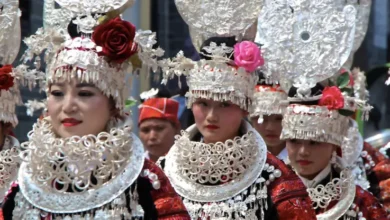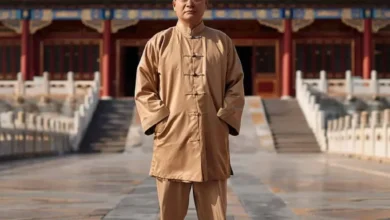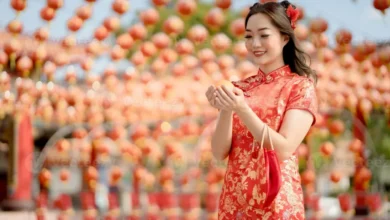The Shenyi is a masterpiece of ancient Chinese fashion, a harmonious blend of functionality, elegance, and philosophical meaning. This iconic piece reflects the artistry, cultural identity, and Confucian ideals that shaped traditional Chinese clothing over centuries. In this article, we delve deeply into the Shenyi, uncovering its history, design, symbolism, and modern relevance.
What is the Shenyi?
The Shenyi (深衣) is a type of traditional Chinese robe characterized by its seamless, flowing design. It combines a top (襦, ru) and a skirt (裳, chang) into a unified garment. Historically, the Shenyi was favored for its elegance, simplicity, and its representation of Confucian values such as modesty and harmony.
Historical Background of the Shenyi

Origins in the Zhou Dynasty
The Shenyi originated during the Zhou Dynasty (1046–256 BCE). It was designed as a garment for scholars and officials, symbolizing propriety and respect for social order.
Adoption in Later Dynasties
Over centuries, the Shenyi evolved but maintained its basic structure. It gained popularity during the Han Dynasty (206 BCE–220 CE), becoming a staple for both men and women in formal settings.
See also Traditional clothing in china: The Timeless Elegance of the Qipao Dress
Traditional clothing in china: The Timeless Elegance of the Qipao DressKey Features of the Shenyi
One-Piece Construction
The Shenyi’s top and bottom are stitched together in a way that forms a single piece. This design ensures a seamless look, symbolizing unity and harmony.
Straight and Wide Sleeves
The sleeves are straight and wide, providing comfort while exuding elegance. This style is both practical and symbolic of freedom and openness.
Cross-Collar Design
The cross-collar (jiaoling youren, 交领右衽) overlaps to the right, reflecting the ancient Chinese principle of modesty and order.
Sash Belt
A sash belt cinches the garment at the waist, creating a flattering silhouette while holding the robe in place.
See also Traditional Chinese Clothing: The Zhongshan Suit
Traditional Chinese Clothing: The Zhongshan Suit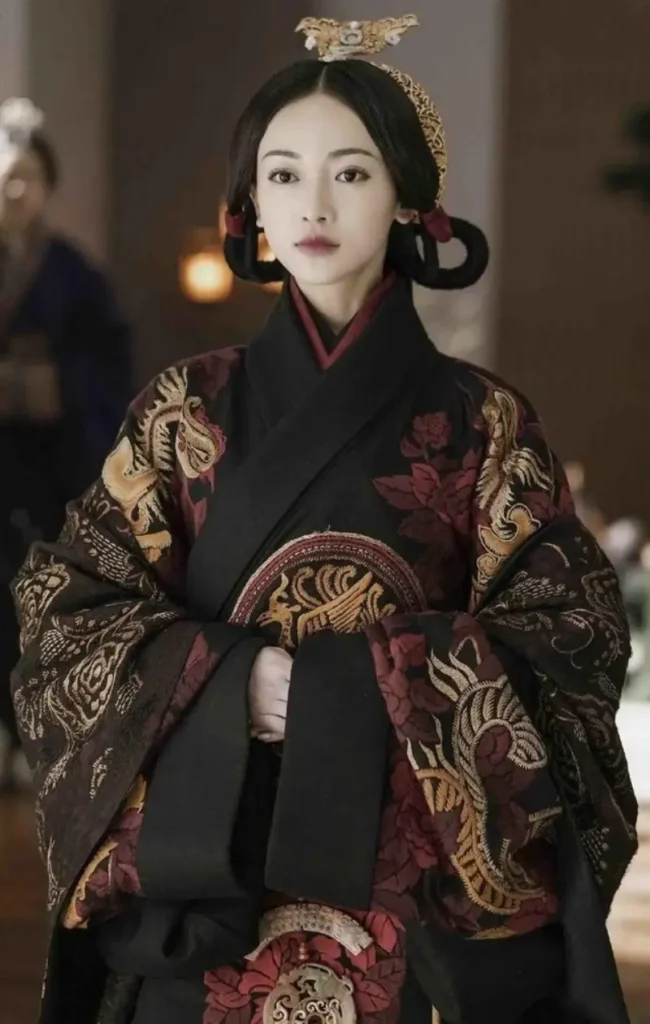
Materials and Colors Used in Shenyi
Silk: The Preferred Material
Silk was commonly used for the Shenyi, particularly for those of higher social status. Its luxurious texture and durability made it a favorite.
Symbolic Colors
Colors held symbolic meaning in Chinese culture:
- White: Simplicity and purity.
- Red: Auspiciousness and celebration.
- Black: Formality and dignity.
Symbolism in the Design of the Shenyi
The Shenyi is rich in symbolism, reflecting Confucian ideals:
- Harmony: The seamless integration of the top and bottom represents societal unity.
- Balance: The symmetrical design mirrors the balance in nature and life.
- Respect: Its modest and formal appearance embodies respect for tradition and authority.
Who Wore the Shenyi?
Scholars and Officials
Confucian scholars and government officials often wore the Shenyi as a sign of their status and adherence to Confucian values.
Everyday People
While silk Shenyi garments were exclusive to the elite, commoners also wore Shenyi made from cotton or hemp, demonstrating its widespread influence.
The Role of Shenyi in Ceremonial Practices
The Shenyi was an essential garment for ceremonies such as:
- Ritual Offerings: Confucian scholars wore it during ancestral worship.
- Weddings: Brides and grooms sometimes donned Shenyi in traditional weddings.
- Official Events: Worn during imperial court ceremonies.
The Evolution of Shenyi Through Dynasties
Han Dynasty
The Shenyi reached its peak during the Han Dynasty, symbolizing the moral and intellectual virtues of the era.
Tang Dynasty
While the Tang Dynasty introduced more elaborate and colorful clothing styles, the Shenyi remained a classic choice for formal occasions.
Ming Dynasty
In the Ming Dynasty, the Shenyi saw a revival, with designs incorporating intricate patterns and embroidery.
Shenyi vs. Other Traditional Chinese Clothing
Shenyi vs. Hanfu
While both are traditional garments, the Shenyi is a specific style of Hanfu. It emphasizes simplicity and philosophical meaning, while other Hanfu styles may focus on decoration and fashion.
Shenyi vs. Qipao
The Shenyi and Qipao serve different purposes. The Shenyi is formal and ceremonial, while the Qipao is more modern and fitted.
How to Wear a Shenyi
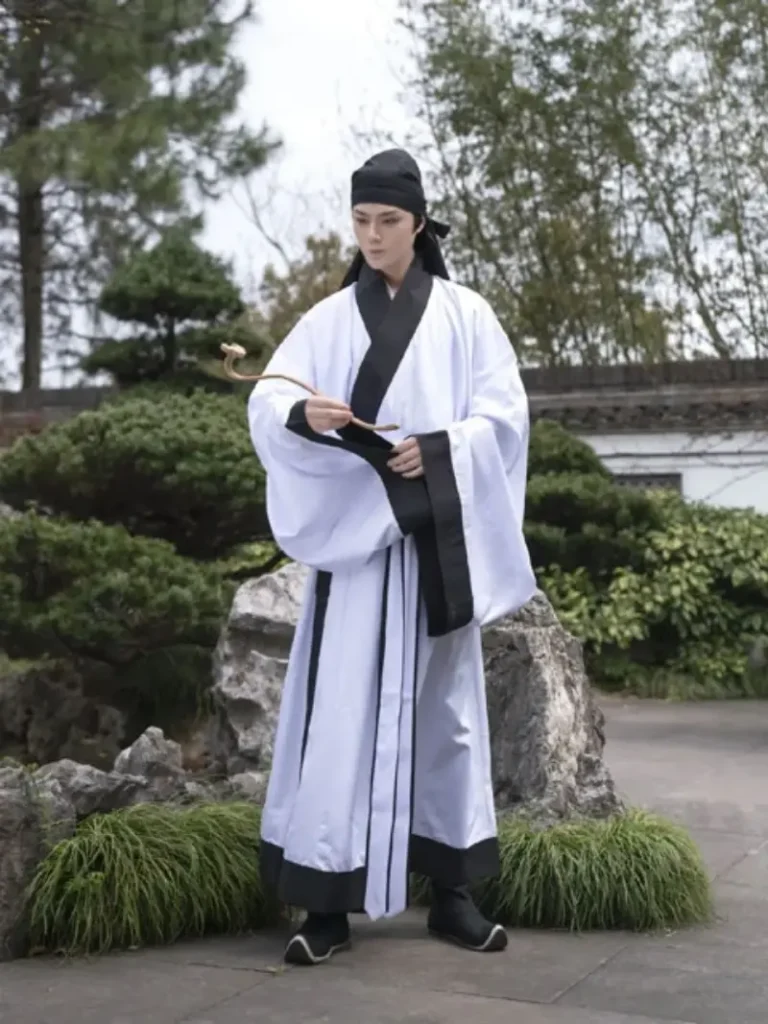
Step-by-Step Instructions
- Lay the Shenyi flat: Ensure the garment is clean and wrinkle-free.
- Wrap the robe around the body: Overlap the right side over the left.
- Secure the sash: Tie the sash at the waist to hold the Shenyi in place.
- Adjust the sleeves: Ensure the sleeves hang symmetrically.
Revival of Shenyi in Modern Times
Cultural Renaissance
In recent years, the Shenyi has gained renewed interest due to the Hanfu movement, which promotes traditional Chinese clothing.
Contemporary Designs
Modern Shenyi-inspired garments combine traditional elements with contemporary fashion, making them accessible for everyday wear.
Why Shenyi Matters Today
Cultural Identity
The Shenyi is more than a garment—it’s a symbol of Chinese cultural identity and heritage.
Sustainability
The Shenyi’s timeless design and use of natural materials align with modern principles of sustainable fashion.
Frequently Asked Questions About Shenyi
Is the Shenyi only for formal occasions?
While traditionally worn for formal events, modern adaptations have made it suitable for casual settings as well.
Can anyone wear a Shenyi?
Yes, the Shenyi is inclusive and can be worn by anyone interested in exploring Chinese culture.
Where can I buy a Shenyi?
Authentic Shenyi garments are available in specialty stores and online shops catering to traditional Chinese clothing.
Timeless Elegance of Shenyi
The Shenyi is not just a piece of clothing it’s a cultural treasure that encapsulates the wisdom and artistry of ancient China. Its harmonious design, rich symbolism, and enduring relevance make it a timeless icon in the world of traditional fashion. Whether worn for its cultural significance or its aesthetic appeal, the Shenyi continues to inspire and captivate, bridging the past and present with grace and elegance.

